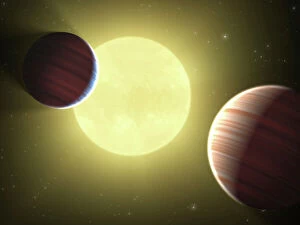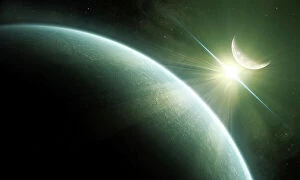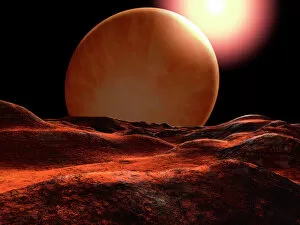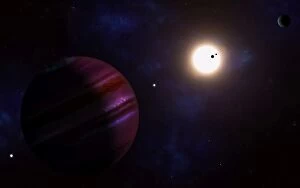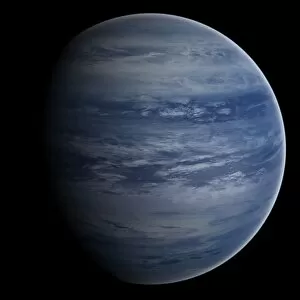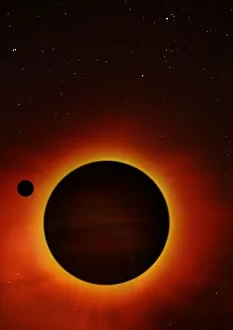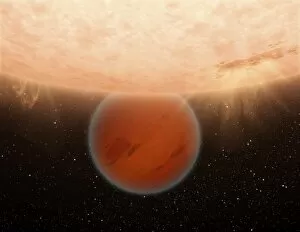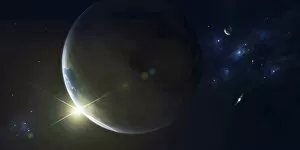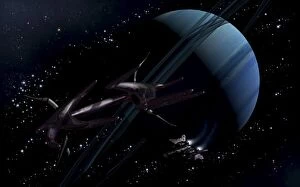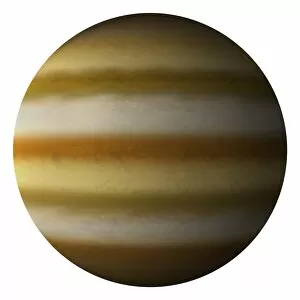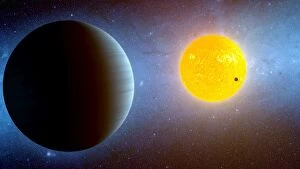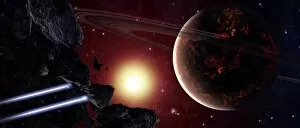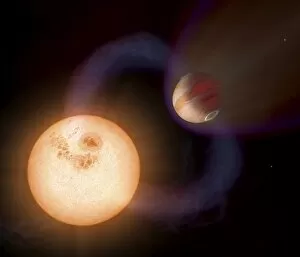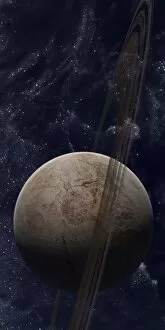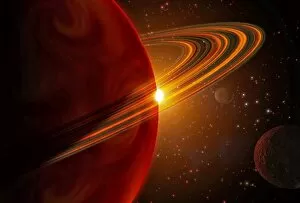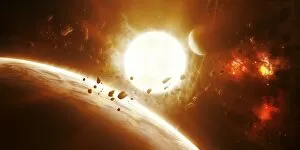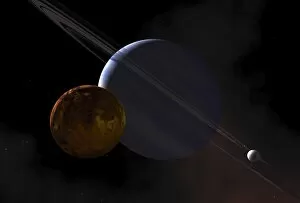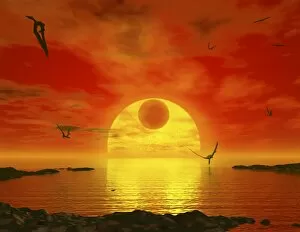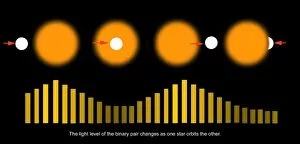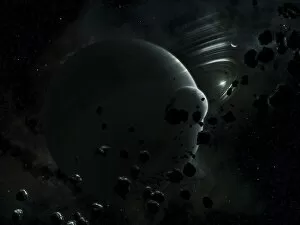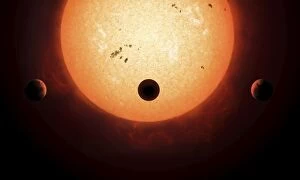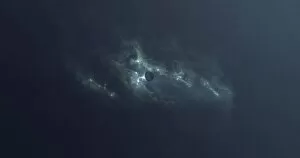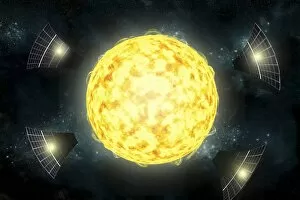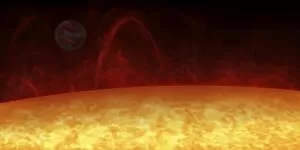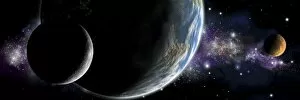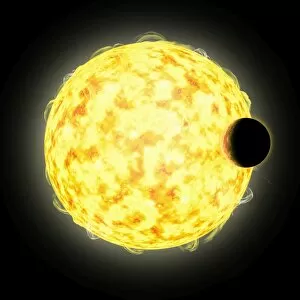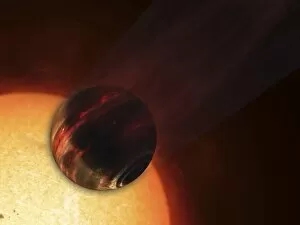Extrasolar Collection
"Exploring the Vast Universe: A Glimpse into Extrasolar Worlds" Artists have conceptualized two Saturn-sized planets discovered by the Kepler mission
For sale as Licensed Images
Choose your image, Select your licence and Download the media
"Exploring the Vast Universe: A Glimpse into Extrasolar Worlds" Artists have conceptualized two Saturn-sized planets discovered by the Kepler mission, expanding our understanding of distant planetary systems. Epsilon Eridani, a captivating artist's concept of a possible habitable planet, ignites our imagination about extraterrestrial life. The super-Jupiter orbiting 70 Virginis unveils the diversity of exoplanets and challenges our knowledge of planetary formation. Witness an extraordinary artwork capturing an exoplanet eclipsing its star, reminding us of the wonders that lie beyond our solar system. The Kepler-11 planetary system comes to life through artistic interpretation, revealing intricate orbits and diverse celestial bodies. Immerse yourself in an alien landscape adorned with enigmatic moons in this stunning artwork (C016 / 6350), transporting us to uncharted territories. Step into the realm of possibility with an artist's concept depicting an intriguing alien planetary system, sparking curiosity about what lies beyond Earth. Experience a breathtaking view from a hypothetical moon orbiting the first known extrasolar planet – a perspective that expands our cosmic horizons. Journey across rocky and watery terrains on Gliese 581 c, as envisioned by artists who bring this extrasolar world closer to our imagination than ever before. Delve into the mysteries of an unusual methane-free world partially eclipsed by its star – another testament to nature's boundless creativity among exoplanets. Upsilon presents itself as another sun-like star harboring a potentially habitable planet within its welcoming "Goldilocks zone, " fueling dreams of finding other Earth-like worlds out there.

